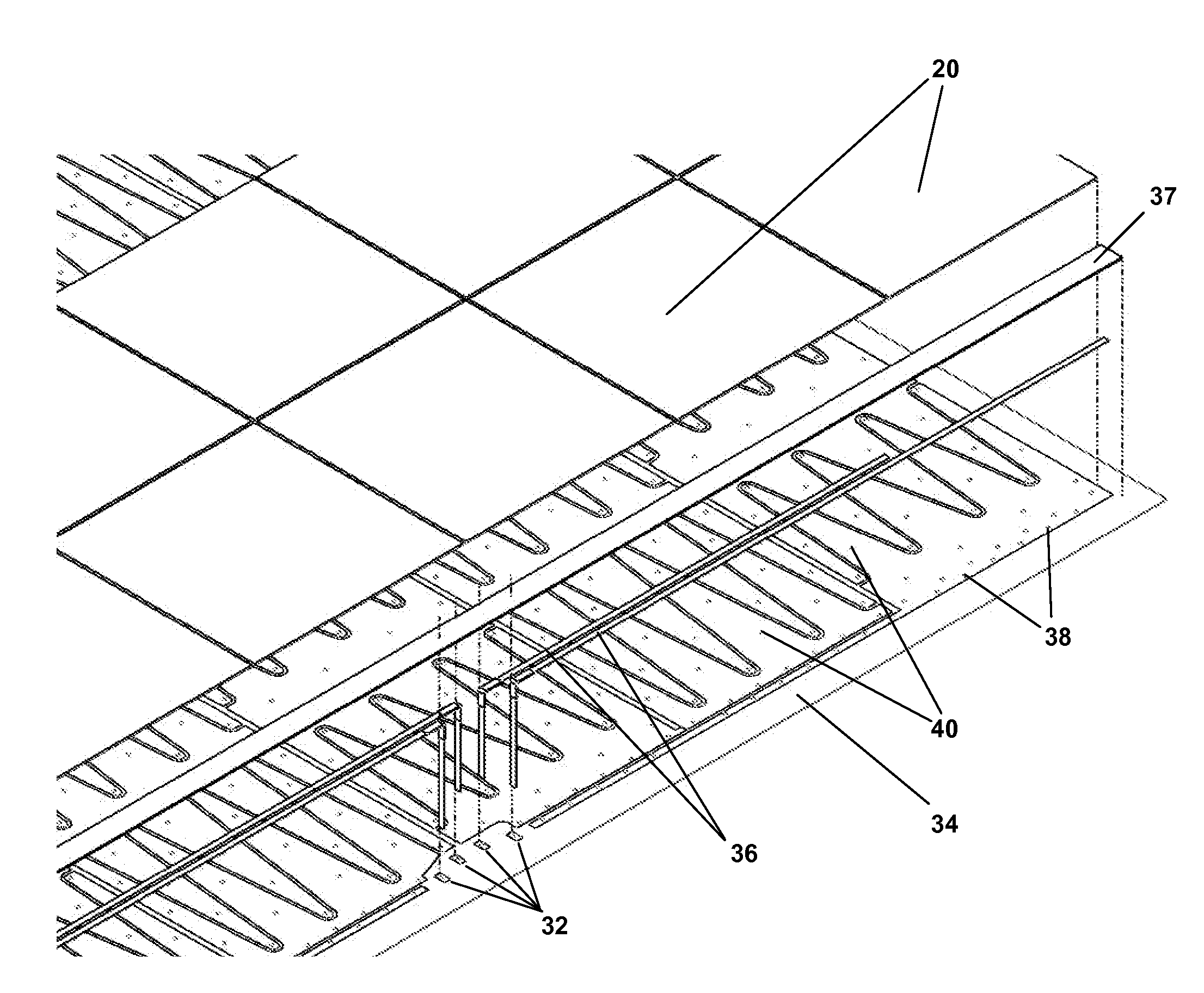Photovoltaic Modules Manufactured Using Monolithic Module Assembly Techniques
a technology of solar cells and modules, applied in photovoltaics, electrical equipment, semiconductor devices, etc., can solve the problems of difficult automation of electrically connecting solar cells in series, high cost, limited throughput of stringers/tabbers,
- Summary
- Abstract
- Description
- Claims
- Application Information
AI Technical Summary
Benefits of technology
Problems solved by technology
Method used
Image
Examples
Embodiment Construction
Monolithically Integrated Cu Bussing
[0048]As used throughout the specification and claims, the term “bus” means a bus bar, bus ribbon, bus strap, or any other conductive element suitable for current bussing.
[0049]In photovoltaic modules using conventional cells, the solar cell strings are terminated at the top and bottom of the module using copper (Cu) bus straps. These Cu bus straps are often coated with Sn or Sn / Ag to prevent interaction with the encapsulant and to enhance solderability. The current needs to be transported a long distance (up to half the width of the photovoltaic module) to the junction box in the center of the module. The Cu bus straps need a large cross sectional area to have sufficiently low resistance to transport current such a long distance with low resistance losses.
[0050]In monolithic module assembly, shown in FIGS. 1A-1D, the solar cells are preferably interconnected using thin metal metallizations or foils 12, 18 of opposite polarity (preferably comprisi...
PUM
 Login to View More
Login to View More Abstract
Description
Claims
Application Information
 Login to View More
Login to View More - R&D
- Intellectual Property
- Life Sciences
- Materials
- Tech Scout
- Unparalleled Data Quality
- Higher Quality Content
- 60% Fewer Hallucinations
Browse by: Latest US Patents, China's latest patents, Technical Efficacy Thesaurus, Application Domain, Technology Topic, Popular Technical Reports.
© 2025 PatSnap. All rights reserved.Legal|Privacy policy|Modern Slavery Act Transparency Statement|Sitemap|About US| Contact US: help@patsnap.com



